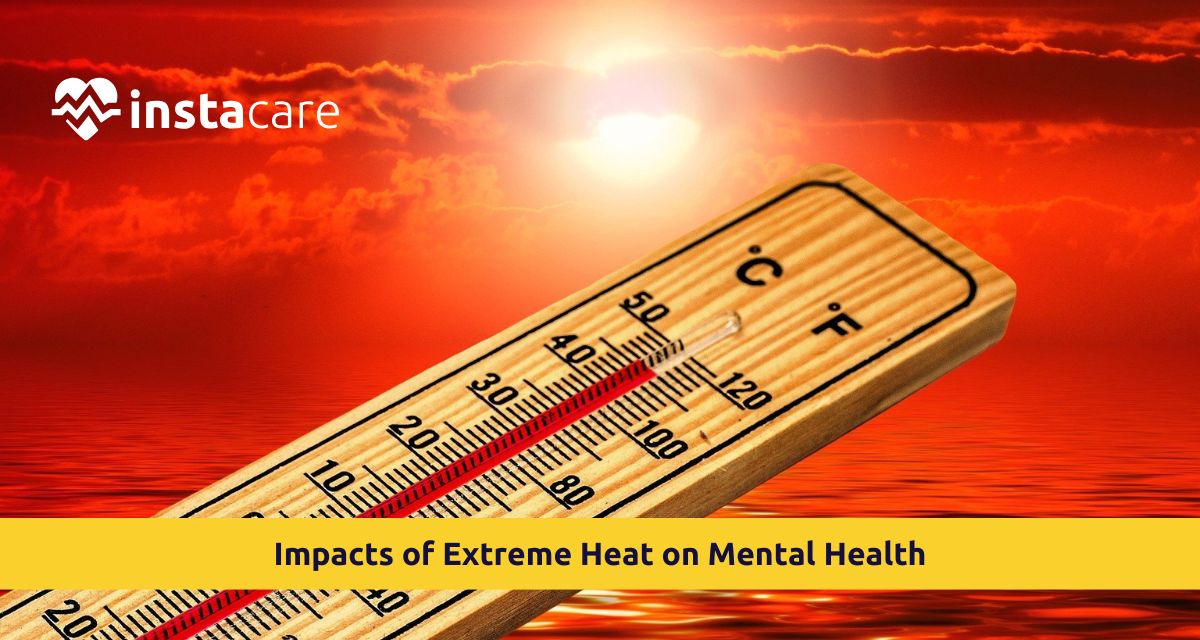The Science Behind Heat and Mental Health
Some of the Psychological Effects of Heat
- Mood Swings and Violence: Empirical evidence for a relationship between temperature and mood disorders does exist. Temperatures are typically hot with temper, frustration, and irritability.
- Increased Anxiety: Anxiety and high temperatures are mostly followed by one another, particularly when individuals are locked indoors without any vent. Heat increases cortisol (stress hormone), thus resulting in more aggravated anxiety symptoms.
- Depression: Fatigue is also triggered by Depression and extreme weather, either hot or cold. Prolonged spells of extreme weather are factors in malignant effects of depression and fatigue in extreme weather. Dealing with distress, sleep disturbance, and isolation are most likely to be the factors causing depressive mood.
- Cognitive Disturbance: Inverse correlations between heat exposure and cognitive function, literature documents. Thought lucidity, decision-making, and problem-solving are possibly becoming increasingly convoluted in the midst of heatwaves.
- Sleep Disturbance: Most neglected is Sleep disturbance due to heat. Sleep disturbance ranks among the primary causes of mood disorders and emotional instability.
- Suicidal Behaviour: Alarming statistics link scorching temperatures with higher Suicide rates and heat climate mental collapse, particularly where there are no adequate infrastructures to respond to climatic stress.
Read More: What You Must Know About Social Media And Mental Health
Understanding the Impact of Extreme Heat on Mental Health
- Children and Teens: They are building their brains and perhaps still haven't learned how to adjust to Heat-related stress or distress at all.
- Older Adults: Older adults undergo physical and mental capacity impairment during heatwaves.
- Individuals with Pre-existing Mental Illness: Individuals with pre-existing mental illnesses like PTSD, bipolar disorder, or schizophrenia are susceptible. Weather catastrophes also are more related to PTSD and trauma, where extraordinary heat can induce existing trauma in the victims of previous weather catastrophes.
- Urban Dwellers: Urban dwellers of Urban heat islands and mental well-being are deeply connected. Urban heat islands with no vegetation and skyscrapers, are exposed to greater temperatures, whose impact on their mental condition is all the more.
- Weaker Sections: Lacking any air-conditioned place or secure open space, some of the weaker sections are exposed to double mental stress of heat and deprivation due to lack of proper shelter and economic arrangements.
Coping Strategies for Excessive Heat on Mental Well-being
- Stay Cool: Use a fan, air conditioner, or even a wet cloth around the neck to regulate body temperature. A shower alone induces emotional balance.
- Adhere to Routine: Extreme weather upsets routine, and this creates instability. Sleep and get up at regular times, and eat at regular times in an effort to obtain as much normalcy as is possible.
- Be Well-Hydrated: Dryness is an invisible stressor. Drink water all day, even if you do not feel the need to, you want your head to be clear and your moods even.
- Avoid Sun Overexposure: Stay inside from 12 PM to 4 PM, when the sun's energy is strongest. When you must venture out, wear a hat and light clothing.
- Sleep First: If the nights are warm, cool your bedroom beforehand before sleeping with an air conditioner or fan. Block light and noise to sleep even in the heat.
- Socialize With Other People: Social contact can help prevent heat stress. Call support groups, talk with friends, or call neighbors in times of stress.
- Consult Professionals: If heat consistently triggers or exacerbates depressive or anxiety symptoms, a mental health professional must be visited. Medication adjustment or counseling may improve resilience to extreme weather.
- Develop Climate Resilience: On a broader level, governments and urban planners need to be mindful of developing Public health and climate resilience. The enhancement of vegetation, heat alarm systems, and walkable cool spaces may be a matter of life and death.
Conclusion

